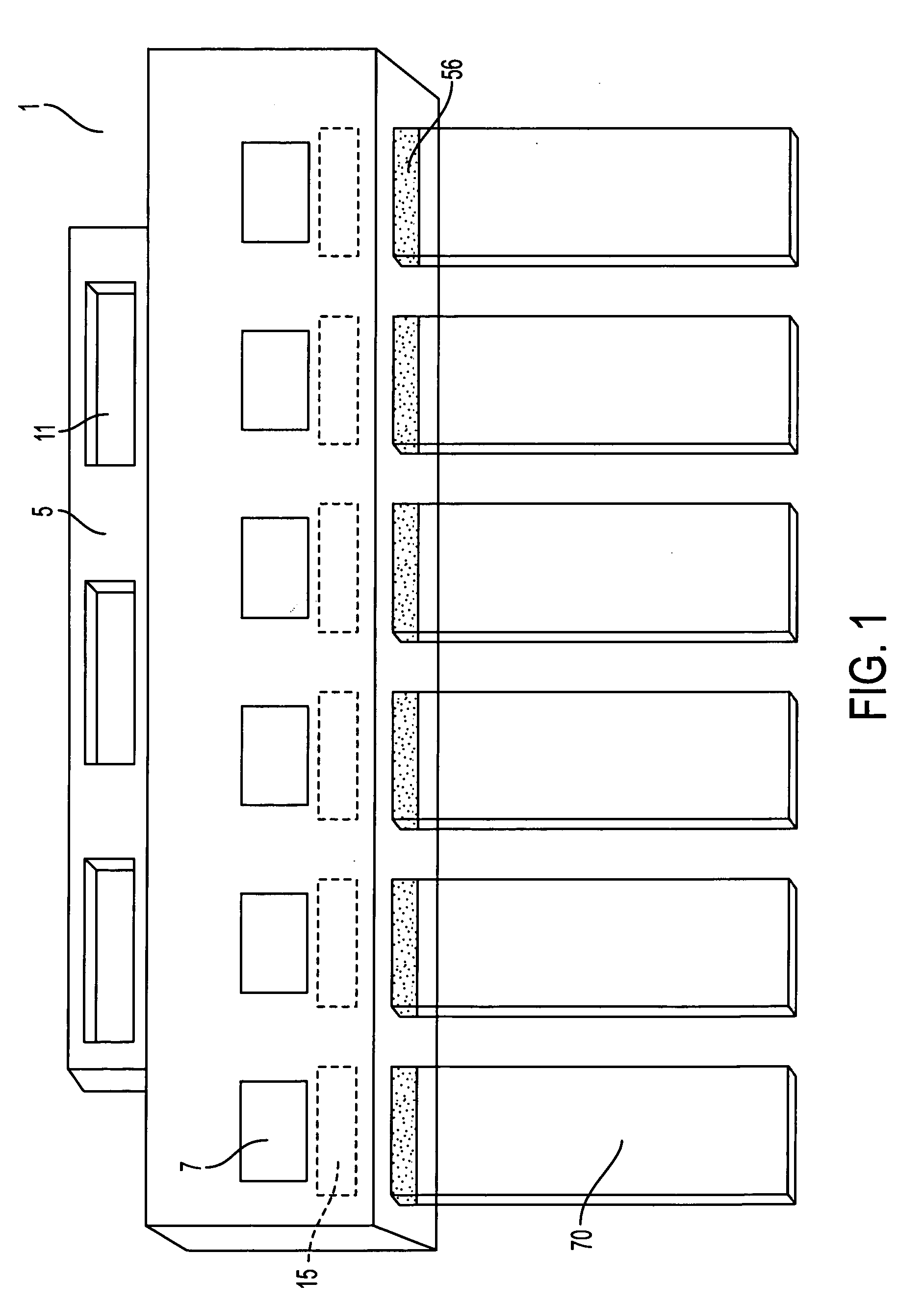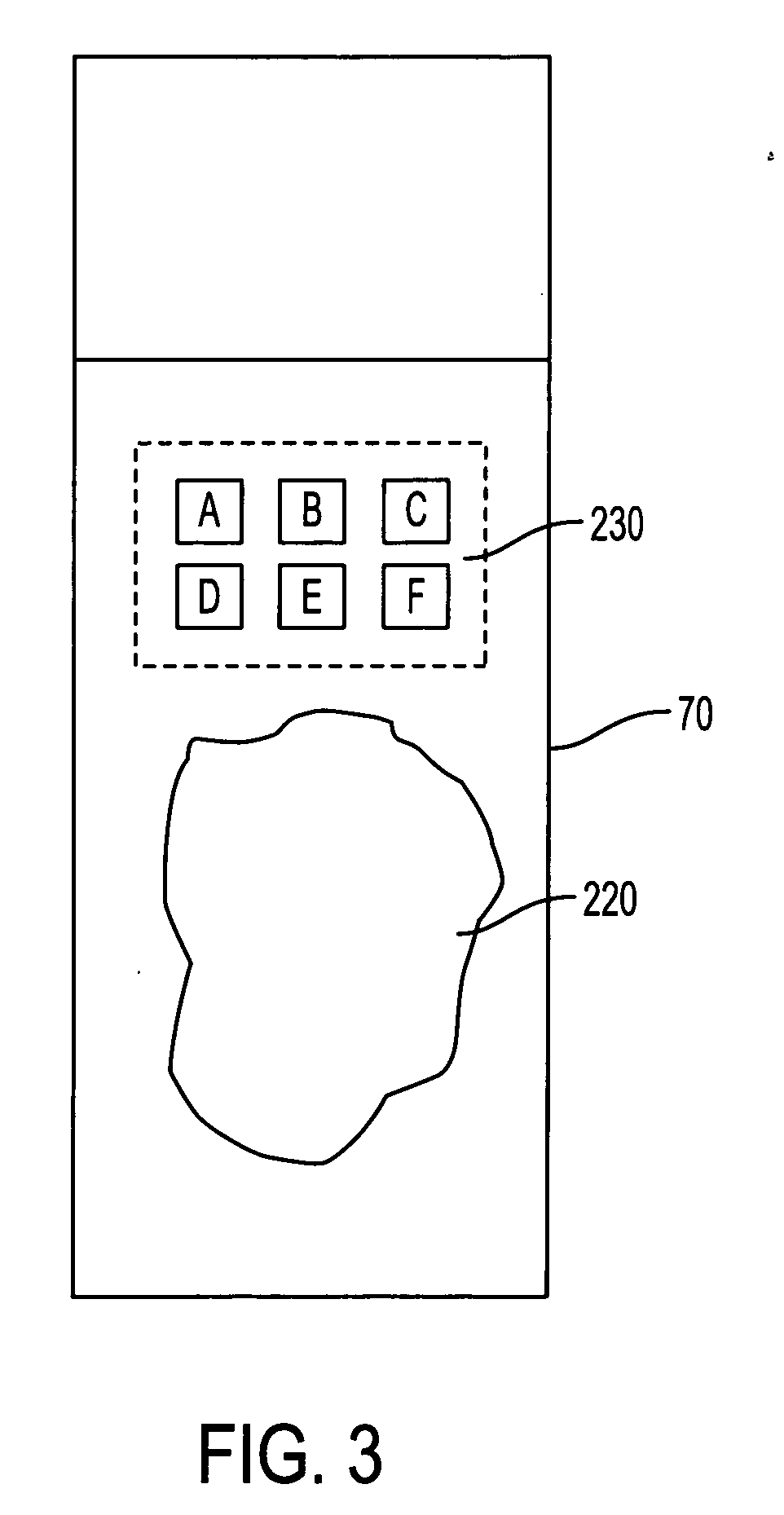Apparatus and methods for efficient processing of biological samples on slides
a technology of slides and apparatuses, applied in the field of apparatuses for processing biological samples on slides, can solve the problems of time and labor, inability to use most commercial ready-to-use reagents in automated systems, and high labor intensity of assays, so as to achieve the effect of faster and convenient assays
- Summary
- Abstract
- Description
- Claims
- Application Information
AI Technical Summary
Benefits of technology
Problems solved by technology
Method used
Image
Examples
example 1
[0034] In this Example a biological sample is treated with antibodies (primary and secondary), treated for chromogen color development, and finally counterstained.
A. Proteolytic Pretreatment of Mounted Tissue Samples
[0035] It is well known in the art that when using certain antibodies for immunocytochemical staining it is necessary to pretreat the formalin fixed tissue section with proteolytic enzymes such as 0.4% pepsin, pH 2.0. When this is necessary the following steps may be utilized. A few drops (150-200 μL) of the proteolytic digestion solution are placed on each well 24 of the 3 or 6 well tray 14. The tissue side of the slides 70 is faced down on the wells 24. The slideholder 1 with the slides 70 should be slowly laid down and placed on the wells 24 of the tray 14. No air bubbles should remain between the tissue side of the slides 70 and the solution in the wells 24 of the tray 14. The slides 70, slideholder 1 and tray 14 with solution are incubated for...
example 2
[0049] In this example biological samples are mounted onto slides 70, hybridized with biotin or digoxigenin labeled probes and reacted with anti-biotin or anti-digoxigenin antibody. The samples are then stained.
A. Preparation and Mounting of Tissue Sample
[0050] A tissue sample is prepared as described above but with extra measures to prevent nucleic acid degradation. A tissue sample is fixed in 10% neutral buffered formalin, processed overnight on a tissue processor, embedded in paraffin, cut into serial sections of 4-5 microns, mounted onto Probe-On-Plus Slides (#15-188-52; Fisher Scientific), and dried overnight at room temperature. The slides 70 are inserted into a slideholder 1 and are deparaffinized by placing into a staining dish. The slides 70 are treated with four changes of xylene for 5 minutes each, two changes of 100% ethanol for 1 minute each and two changes of 95% ethanol for 1 minute each. The deparaffinized tissue section slides are then clear...
example 3
[0062] Polymerase chain reaction (PCR) was developed as an in vitro method for amplifying small amounts of specific pieces of nucleic acids. This was later adapted to in situ studies so that there was amplification of nucleic acid within tissue sections. The apparatus of the present invention is suited to performing these in situ PCRs. An example of a PCR in situ hybridization protocol is given in Nuovo (1994).
A. In Situ PCR
[0063] Serial tissue sections are cut at 4-5 microns thickness, mounted onto Probe-On-Plus slides 70, and dried overnight at room temperature. The mounted tissue sections are deparaffinized and digested with pepsin at 40° C. for 15-90 minutes depending on the length of time of fixation in formalin. The pepsin is inactivated by washing the slides 70 in diethylpyrocarbonate (DEPC) treated water for one minute followed by a one minute wash in 100% ethanol. The slides 70 are then air dried.
[0064] Polymerase chain reaction solutions are m...
PUM
| Property | Measurement | Unit |
|---|---|---|
| volume | aaaaa | aaaaa |
| volume | aaaaa | aaaaa |
| power | aaaaa | aaaaa |
Abstract
Description
Claims
Application Information
 Login to View More
Login to View More - R&D
- Intellectual Property
- Life Sciences
- Materials
- Tech Scout
- Unparalleled Data Quality
- Higher Quality Content
- 60% Fewer Hallucinations
Browse by: Latest US Patents, China's latest patents, Technical Efficacy Thesaurus, Application Domain, Technology Topic, Popular Technical Reports.
© 2025 PatSnap. All rights reserved.Legal|Privacy policy|Modern Slavery Act Transparency Statement|Sitemap|About US| Contact US: help@patsnap.com



